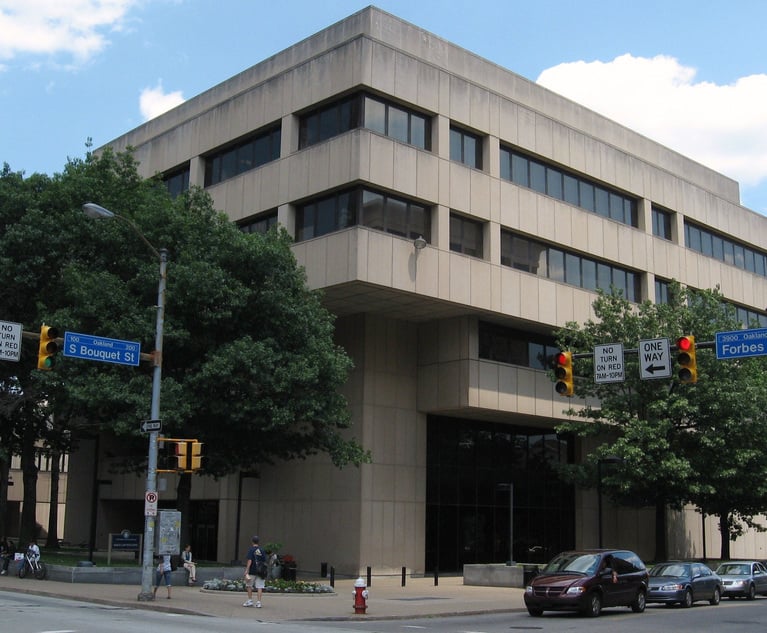Law School Applicant Pool Is Up—With Caveats
The number of people taking the LSAT this year increased more than 7%, yet more people are taking the test multiple times. The national law school applicant pool is up nearly 4%.
June 12, 2019 at 01:54 PM
3 minute read
 Photo: Shutterstock
Photo: Shutterstock
The number of people taking the Law School Admission Test increased for the fourth straight year during the 2018-19 cycle—good news for law schools hoping for larger applicant pools and evidence that the so-called “Trump Bump” is more than a fleeting phenomenon. But that 7.3% growth fell short of the previous years' 18% surge in LSAT takers.
Altogether, 138,957 people sat for the exam between June 2018 and March 2019, marking the first time since 2010 that LSAT takers topped 130,000. (2009 was a high mark, when 171,514 took the entrance exam, before law school admissions headed into an eight-year slump.)
The increase in LSAT takers also is translating into more applicants. Thus far, the number of applicants to American Bar Association-accredited law schools for fall is up 3.7%. As with LSAT takers, that's more modest growth than the previous year, when applicants increased 7.6%. By this time last year, 95% of applications had been submitted, according to the Law School Admission Council.
While the number of LSATs administered increased this cycle, a larger percentage were repeat test-takers, according to Susan Krinsky, vice president and chief of staff and director of enrollment management at the council, which develops the test. Just 57% of those who took the LSAT this cycle were first-time takers, down from 61% the previous year. Even though the percentage of first-time test takers was smaller than the previous year, the actual number of those taking the test for the first time this cycle was several hundred higher, Krinsky noted.
One potential factor in the uptick of repeat test-takers is that the people now have more opportunities to sit for the exam. It was administered six times this cycle, up from the traditional four times annually. (It will soon expand to 10 administrations a year.) Moreover, the council in late 2017 did away with a rule limiting people from taking the test no more than three times over a two-year period.
“It's not possible to know whether the increase in repeaters is due to more tests, or our lifting the limit on the number of times you can take it,” Krinsky said.
But the rise in repeat test-takers means that significant increases in the number of LSATs administered won't necessarily result in a corresponding boost in the size of the national applicant pool. That was always the case, given that not everyone who takes the LSAT ultimately applies to law school, Krinsky said. But a rise in repeat test-takers makes it harder to predict applicant volumes based only on the number of times the LSAT is given.
Law schools also closely watch the LSAT score distribution of the applicant pool, and this year's numbers indicate that those with the highest scores aren't applying in the same numbers as the previous year. Thus far, the number of applicants with scores of 175 to 180 is down nearly 22%, while those with scores of 170 to 174 is down about 2%. (Those categories represent just a small slice of the overall applicant pool.) By contrast, every score category from 140 and below to 160 to 164 is up.
That's worrisome news for elite law schools that compete fiercely for applicants with top LSAT scores, and indicates that last year's spike in applicants with the highest LSAT scores may prove to be a temporary blip.
This content has been archived. It is available through our partners, LexisNexis® and Bloomberg Law.
To view this content, please continue to their sites.
Not a Lexis Subscriber?
Subscribe Now
Not a Bloomberg Law Subscriber?
Subscribe Now
NOT FOR REPRINT
© 2025 ALM Global, LLC, All Rights Reserved. Request academic re-use from www.copyright.com. All other uses, submit a request to [email protected]. For more information visit Asset & Logo Licensing.
You Might Like
View All
LSU General Counsel Quits Amid Fracas Over First Amendment Rights of Law Professor
7 minute read
Pennsylvania Law Schools Are Seeing Double-Digit Boosts in 2025 Applications
5 minute read
What’s at Stake in Supreme Court Case Over Religious Charter School?

University of New Hampshire Law School Launches Specialized Health, Life Sciences Program
Trending Stories
- 1Public Notices/Calendars
- 2Wednesday Newspaper
- 3Decision of the Day: Qui Tam Relators Do Not Plausibly Claim Firm Avoided Tax Obligations Through Visa Applications, Circuit Finds
- 4Judicial Ethics Opinion 24-116
- 5Big Law Firms Sheppard Mullin, Morgan Lewis and Baker Botts Add Partners in Houston
Who Got The Work
J. Brugh Lower of Gibbons has entered an appearance for industrial equipment supplier Devco Corporation in a pending trademark infringement lawsuit. The suit, accusing the defendant of selling knock-off Graco products, was filed Dec. 18 in New Jersey District Court by Rivkin Radler on behalf of Graco Inc. and Graco Minnesota. The case, assigned to U.S. District Judge Zahid N. Quraishi, is 3:24-cv-11294, Graco Inc. et al v. Devco Corporation.
Who Got The Work
Rebecca Maller-Stein and Kent A. Yalowitz of Arnold & Porter Kaye Scholer have entered their appearances for Hanaco Venture Capital and its executives, Lior Prosor and David Frankel, in a pending securities lawsuit. The action, filed on Dec. 24 in New York Southern District Court by Zell, Aron & Co. on behalf of Goldeneye Advisors, accuses the defendants of negligently and fraudulently managing the plaintiff's $1 million investment. The case, assigned to U.S. District Judge Vernon S. Broderick, is 1:24-cv-09918, Goldeneye Advisors, LLC v. Hanaco Venture Capital, Ltd. et al.
Who Got The Work
Attorneys from A&O Shearman has stepped in as defense counsel for Toronto-Dominion Bank and other defendants in a pending securities class action. The suit, filed Dec. 11 in New York Southern District Court by Bleichmar Fonti & Auld, accuses the defendants of concealing the bank's 'pervasive' deficiencies in regards to its compliance with the Bank Secrecy Act and the quality of its anti-money laundering controls. The case, assigned to U.S. District Judge Arun Subramanian, is 1:24-cv-09445, Gonzalez v. The Toronto-Dominion Bank et al.
Who Got The Work
Crown Castle International, a Pennsylvania company providing shared communications infrastructure, has turned to Luke D. Wolf of Gordon Rees Scully Mansukhani to fend off a pending breach-of-contract lawsuit. The court action, filed Nov. 25 in Michigan Eastern District Court by Hooper Hathaway PC on behalf of The Town Residences LLC, accuses Crown Castle of failing to transfer approximately $30,000 in utility payments from T-Mobile in breach of a roof-top lease and assignment agreement. The case, assigned to U.S. District Judge Susan K. Declercq, is 2:24-cv-13131, The Town Residences LLC v. T-Mobile US, Inc. et al.
Who Got The Work
Wilfred P. Coronato and Daniel M. Schwartz of McCarter & English have stepped in as defense counsel to Electrolux Home Products Inc. in a pending product liability lawsuit. The court action, filed Nov. 26 in New York Eastern District Court by Poulos Lopiccolo PC and Nagel Rice LLP on behalf of David Stern, alleges that the defendant's refrigerators’ drawers and shelving repeatedly break and fall apart within months after purchase. The case, assigned to U.S. District Judge Joan M. Azrack, is 2:24-cv-08204, Stern v. Electrolux Home Products, Inc.
Featured Firms
Law Offices of Gary Martin Hays & Associates, P.C.
(470) 294-1674
Law Offices of Mark E. Salomone
(857) 444-6468
Smith & Hassler
(713) 739-1250








